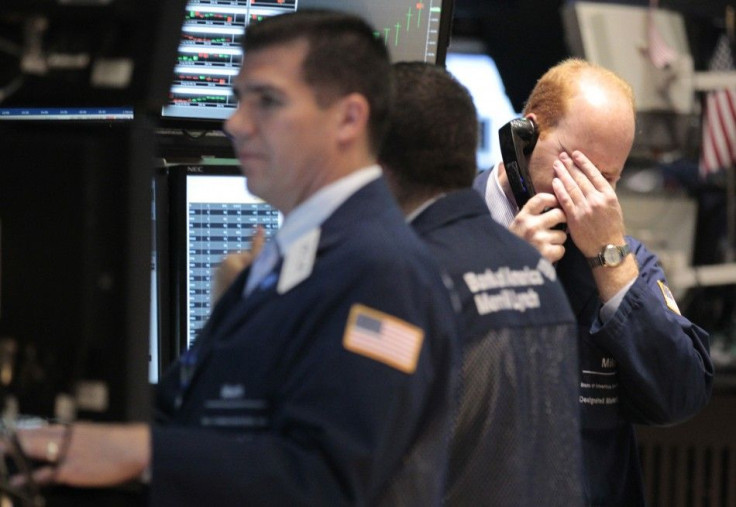Buyers ditch usual optimism after Wall Street mauled

After the terrible rout in markets on Thursday investors spoke of holding fast and even poking around for buying opportunities, but that's hard when the market is likely facing another weak U.S. jobs report on Friday.
Markets' sentiment has swung dramatically in the last few days as investors price in another recession and an unsuccessful battle by euro zone politicians to halt an expanding sovereign debt crisis.
With the Standard & Poor's 500 index down 11 percent in ten days, some investors might think it's time to jump back in with two feet. Not this time. Not yet.
"The last time people were terrified was two-and-a-half years ago -- that was a great time to be greedy," said Rob Arnott, chairman of Research Affiliates of Newport Beach, California, who oversees $80 billion.
But markets are not terrified yet.
"A day like today is going to lead people to be awfully rattled -- but terrified? No," he added.
The last time the S&P fell so far, so fast occurred in March 2009, the end of a run of panicked selling before the market went on a tear that saw the S&P double by April 2011.
The growing worry of economic weakness and the intractable nature of the European debt crisis may diminish the impact of Friday's data on the employment situation. Expectations are for payroll growth of 85,000 jobs, a figure that would confirm the status quo -- that job growth is too slow to keep up with the labor force.
"You would need something in the payrolls to point to outright recession to probably have a large effect on (Treasury security) yields," said Adam Brown, co-head of Treasury trading at Barclays Capital in New York. "Any one number, unless it's an extreme outlier, will probably have less of an effect than normal."
Analysts at CRT said the results of their August non-farm payrolls survey ahead of the July data were skewed to a "do-nothing approach" as two-year yields hit record lows and long-dated yields fell sharply as well.
The heavy volume in stocks - it was the busiest day since June 2010 -- and the sharp divide between gainers and losers on the New York Stock Exchange suggests the kind of end-game selling that results in short-term buying opportunities.
Since 1983, the day after the stock market falls more than 3 percent has been a buying opportunity nearly two-thirds of the time, with an average gain of 0.49 percent, according to Bespoke Investment Group of Harrison, N.Y.
"You know these things usually end with a selling climax. Today and perhaps tomorrow we'll have climatic proportions," Byron Wien, vice chair of Blackstone Advisory Partners, told Reuters Insider.
"I'm lining up opportunities on the equity side. I think the market will bottom before the fundamentals improve. So I'm letting the market tell me when it's over."
The depth of the financial crisis schooled investors in a few hard lessons unless they were adept enough to sell after big one-day rallies.
Some of the best rebounds for the market were between September and December 2008 -- but they were sucker's rallies. On October 10, 2008, stocks rose 11.6 percent. The average kept falling. A 7 percent one-day rally a month later didn't hold. Nor another 4 percent gain in early December.
Investors in uncertain markets such as this often look for a trigger that the selling has exhausted itself. But Europe's sovereign debt crisis continues to bleed through the bandages put on it. Job growth is slack, and the conclusion of the wrangling in Washington over the U.S. debt ceiling left investors not relieved but sour -- and expecting more such fights.
With that in mind, tomorrow may be a better day. But it is unlikely to be the first of many better days.
"We're waiting for something to get cheap so we can pounce," Arnott said. "But this is the first serious jolt we've had in a long time, and basically the market is saying we don't believe the policy elite in the U.S. or Europe or Japan have a clue how to wind down the addiction to debt."
© Copyright Thomson Reuters 2024. All rights reserved.




















